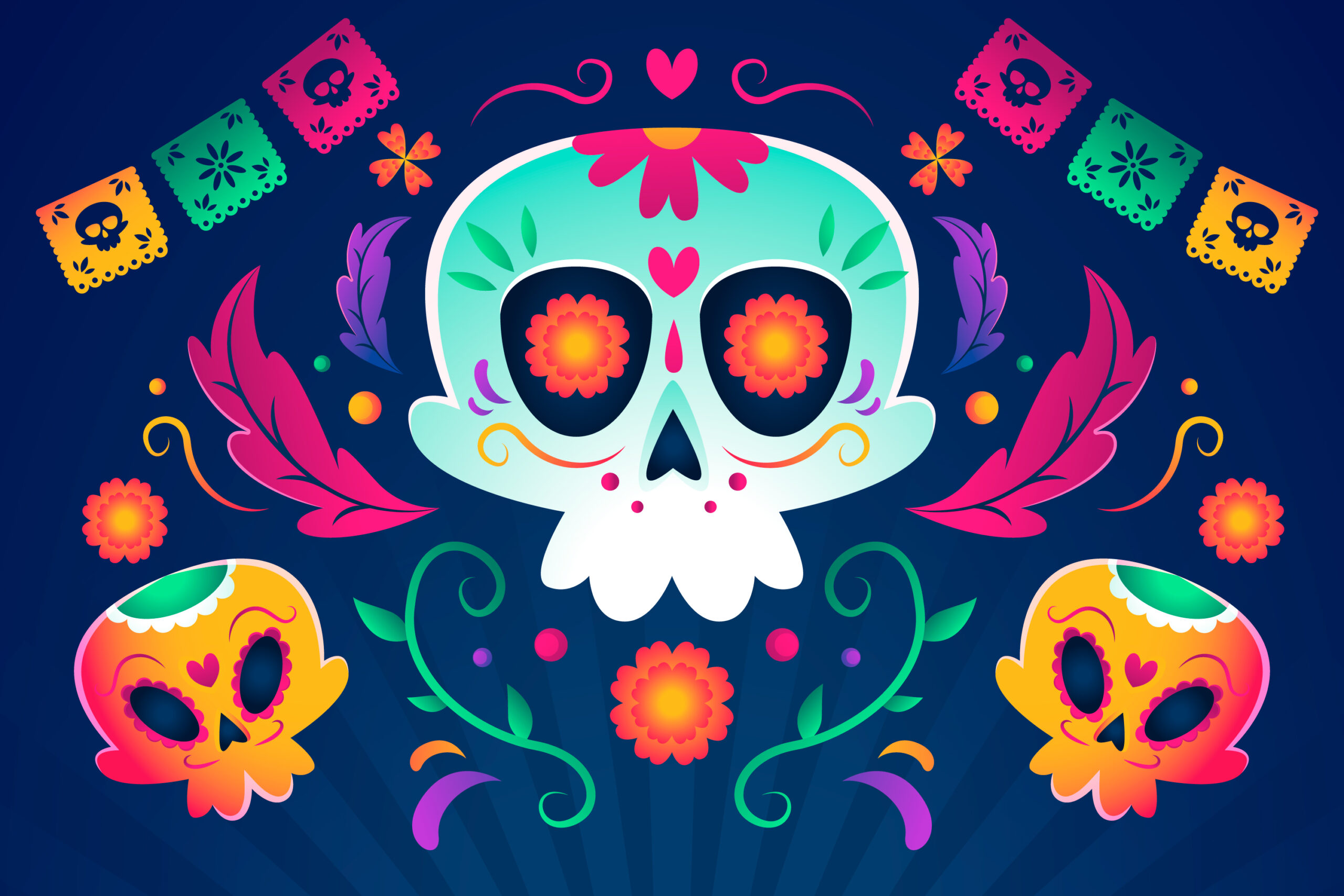
Complete Guide to Mexican Spanish: 40 Essential Expressions and Idioms
Have you ever wondered what “¿Qué onda?” really means or when to use “Ahorita”? Welcome to a linguistic journey that will take you through the colorful and varied world of Mexican Spanish. In this comprehensive guide, you’ll explore 40 essential expressions and idioms that will not only help you understand and communicate better in Mexico but also bring you closer to the rich culture of the country. Whether you’re planning a trip, learning the language, or just curious, this guide will provide you with useful tools to navigate fluently and confidently. So, get ready to dive into the fascinating world of Mexican Spanish.
Mexican Spanish in Everyday Life
Imagine walking through the streets of Mexico City, the air filled with life and movement. What better way to blend in than by knowing some of the most common expressions used at home, on the street, and at work? Here are 10 phrases you’ll frequently hear that will make you feel like a local.
- ¿Qué onda?: An informal greeting equivalent to “What’s up?” or “How are you?” It’s perfect for breaking the ice with friends and acquaintances. For example, when meeting a friend at a café, you might say, “Hey, Juan! ¿Qué onda?”
- Ahorita: This word can be confusing for foreigners as its meaning can vary from “in a moment” to “later.” It’s a true reflection of the flexibility of time in Mexican culture. If someone says “Ahorita vengo,” be prepared to wait a few minutes… or maybe a bit longer.
- Chamba: A colloquial word for “work.” You’ll hear phrases like “Estoy buscando chamba” or “Tengo mucha chamba hoy.”
- No manches: Used to express surprise or disbelief, similar to “No way!” in English. For example, if your friend tells you they won the lottery, you might respond, “¡No manches! Are you serious?”
- Güey: A word that can mean “friend” or “dude,” depending on the context. It’s very common among young people, and although it can seem rude, it is generally used in a friendly manner.
- Chido: Means “cool” or “awesome.” If someone shows you something impressive, you could say, “¡Está bien chido!”
- Fresa: Describes someone as snobby or elitist. “I don’t want to go to that party, it’s for snobs.”
- Mande: A polite way of saying “What?” when you haven’t heard something clearly. Frequently used with superiors or in formal contexts.
- Bronca: Means “problem” or “difficulty.” For example, “No tengo bronca con eso” means you don’t have any problem with something.
- Platicar: A more relaxed way to say “to chat.” “Let’s chat for a while at the café.”

Popular Expressions and Their Meanings
Have you ever felt “en la luna” or thought someone “me cae gordo”? Mexican Spanish is full of colorful expressions that, literally, might sound strange, but are essential for authentic conversation. Here we break down 10 key expressions and their use in everyday conversations.
- Estar en la luna: Means to be absent-minded or distracted. Imagine your co-worker who never seems to pay attention in meetings. “Juan siempre está en la luna, nunca escucha nada.”
- Me cae gordo: An expression that indicates someone doesn’t please you. If you have a colleague who is always critical, you might say, “That guy gets on my nerves, he always has something negative to say.”
- Echarle ganas: Motivation to make an extra effort. “Come on, Juan, give it your best shot on your project.”
- ¡Aguas!: A warning meaning “Watch out!” If you’re crossing the street and a car is coming, someone might shout, “Watch out for the car!”
- Navegar con bandera de tonto: To pretend to be naïve or unaware of something. “Carlos pretends to be naïve, but he actually knows more than he says.”
- Ser uña y mugre: To be inseparable. “Ana and Luis are inseparable, they’re always together.”
- Tener la cola larga: To have many secrets or problems to hide. “That politician has a lot of skeletons in the closet, there are many scandals in his past.”
- Dar el gatazo: To look better than it really is. “This phone is cheap but it looks like a high-end model.”
- Quedarse con el ojo cuadrado: To be amazed. “I was stunned when I saw how much that car cost.”
- Hacerse pato: To pretend not to know or understand something to avoid responsibilities. “Don’t pretend and finish your tasks.”
Do you want to learn more about Mexican Spanish?
Youth Slang: The Language of Mexican Youth
Young people always find creative ways to communicate, and Mexico is no different. If you want to understand conversations on social media, in schools, and among friends, these 10 modern expressions will be very helpful.
- Chido: Already mentioned, but worth repeating. “That movie was awesome.”
- Neta: Used to emphasize the truth of something. “Did he really say that to you?” means “Did he really say that to you?”
- Flaite: A pejorative term to describe someone from a lower class with bad manners. “That guy gave me a bad vibe.”
- Cuate: Close friend. “I’m going out with my buddies tonight.”
- Tirar la hueva: To relax or do nothing. “On Sundays, I just want to laze around at home.”
- Vaquero: Police officer. “Watch out, here comes a cop.”
- Buenazo: Very good or attractive. “That ice cream is delicious.”
- Sacar de onda: To surprise or confuse. “It threw me off when he said he was leaving.”
- Chavalo: Kid or young person. “That kid has a lot of energy.”
- Morras/Morritos: Girls or boys. “The girls are organizing the party.”

Regional Idioms: Variations of Mexican Spanish
Mexico is a large and diverse country, and Spanish is not homogeneous across all regions. Here we explore 10 idioms specific to different Mexican states.
- Chilango: A resident of Mexico City. “That accent is very Chilango.”
- Padrísimo: Very good, common in central Mexico. “That concert was awesome.”
- Órale: An expression of surprise or agreement, common throughout Mexico but with regional variations. “Wow, you got here quickly!”
- No hay tos: No problem, in northern Mexico. “Don’t worry, it’s no big deal.”
- A la brava: To do something without thinking, common in the north. “He did it recklessly and it turned out well.”
- Bichi: Naked, in Sinaloa. “The kids were naked on the beach.”
- Choco: A person from Tabasco. “That Choco always has good jokes.”
- Guache: Kid, in northern Mexico. “The kid is playing in the street.”
- Perro: Difficult or impressive, in Guadalajara. “That exam was tough.”
- Cachai: Do you understand?, used in Baja California. “Let’s go to the beach, you get it?”

Connecting with Mexican Spanish: An Essential Tool for Your Trip
Now that you’ve explored these 40 expressions and idioms of Mexican Spanish, you’re better prepared to interact effectively and authentically in any situation. Not only will you improve your understanding of the language, but you will also gain a deeper insight into the rich Mexican culture. Imagine your next trip to Mexico, chatting confidently with locals, understanding jokes, and participating in conversations fluently.
Remember, practice makes perfect. Why not try using some of these expressions in your daily conversations? Or perhaps watch a Mexican movie and try to identify these idioms? You can also subscribe to our blog for more tips and resources to help you improve your Spanish. You could even download our free guide to carry with you and consult whenever you need!
Do you want to learn more about Mexican Spanish?






